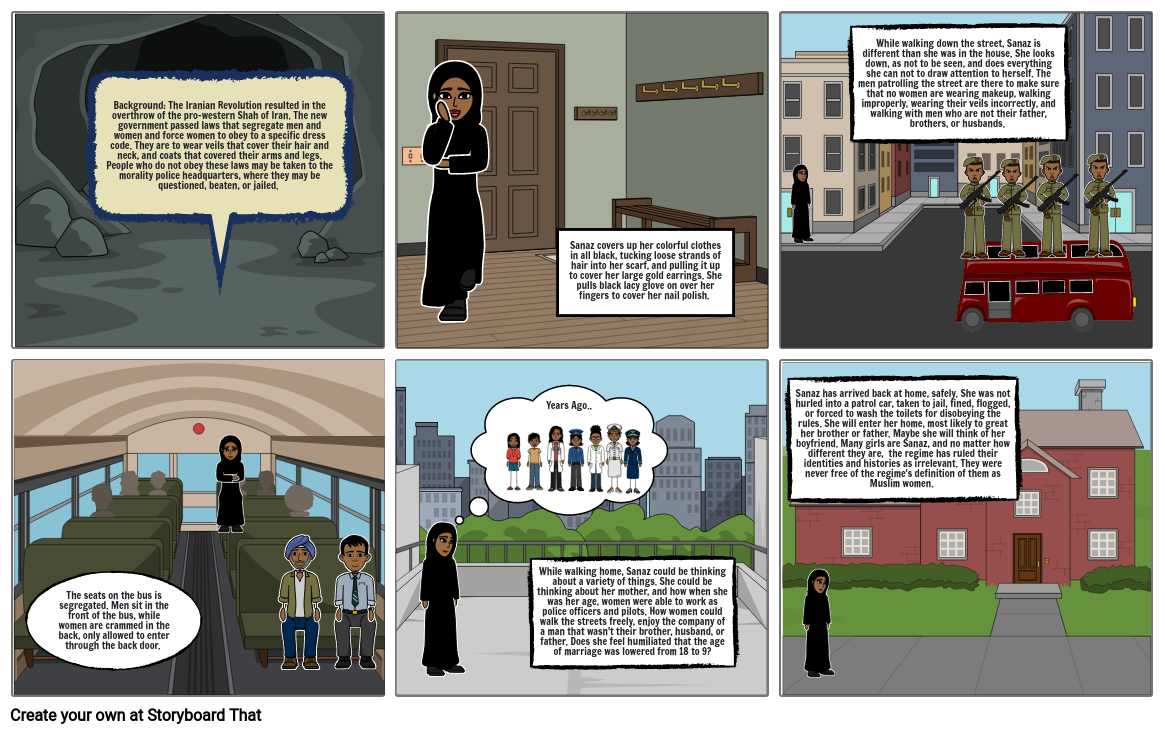Reading Lolita in Tehran

Storyboard Text
- Background: The Iranian Revolution resulted in the overthrow of the pro-western Shah of Iran. The new government passed laws that segregate men and women and force women to obey to a specific dress code. They are to wear veils that cover their hair and neck, and coats that covered their arms and legs. People who do not obey these laws may be taken to the morality police headquarters, where they may be questioned, beaten, or jailed.
- Sanaz covers up her colorful clothes in all black, tucking loose strands of hair into her scarf, and pulling it up to cover her large gold earrings. She pulls black lacy glove on over her fingers to cover her nail polish.
- While walking down the street, Sanaz is different than she was in the house. She looks down, as not to be seen, and does everything she can not to draw attention to herself. The men patrolling the street are there to make sure that no women are wearing makeup, walking improperly, wearing their veils incorrectly, and walking with men who are not their father, brothers, or husbands.
- The seats on the bus is segregated. Men sit in the front of the bus, while women are crammed in the back, only allowed to enter through the back door.
- Years Ago..
- While walking home, Sanaz could be thinking about a variety of things. She could be thinking about her mother, and how when she was her age, women were able to work as police officers and pilots. How women could walk the streets freely, enjoy the company of a man that wasn't their brother, husband, or father. Does she feel humiliated that the age of marriage was lowered from 18 to 9?
- Sanaz has arrived back at home, safely. She was not hurled into a patrol car, taken to jail, fined, flogged, or forced to wash the toilets for disobeying the rules. She will enter her home, most likely to great her brother or father. Maybe she will think of her boyfriend. Many girls are Sanaz, and no matter how different they are, the regime has ruled their identities and histories as irrelevant. They were never free of the regime's definition of them as Muslim women.
Over 30 Million Storyboards Created
No Downloads, No Credit Card, and No Login Needed to Try!


